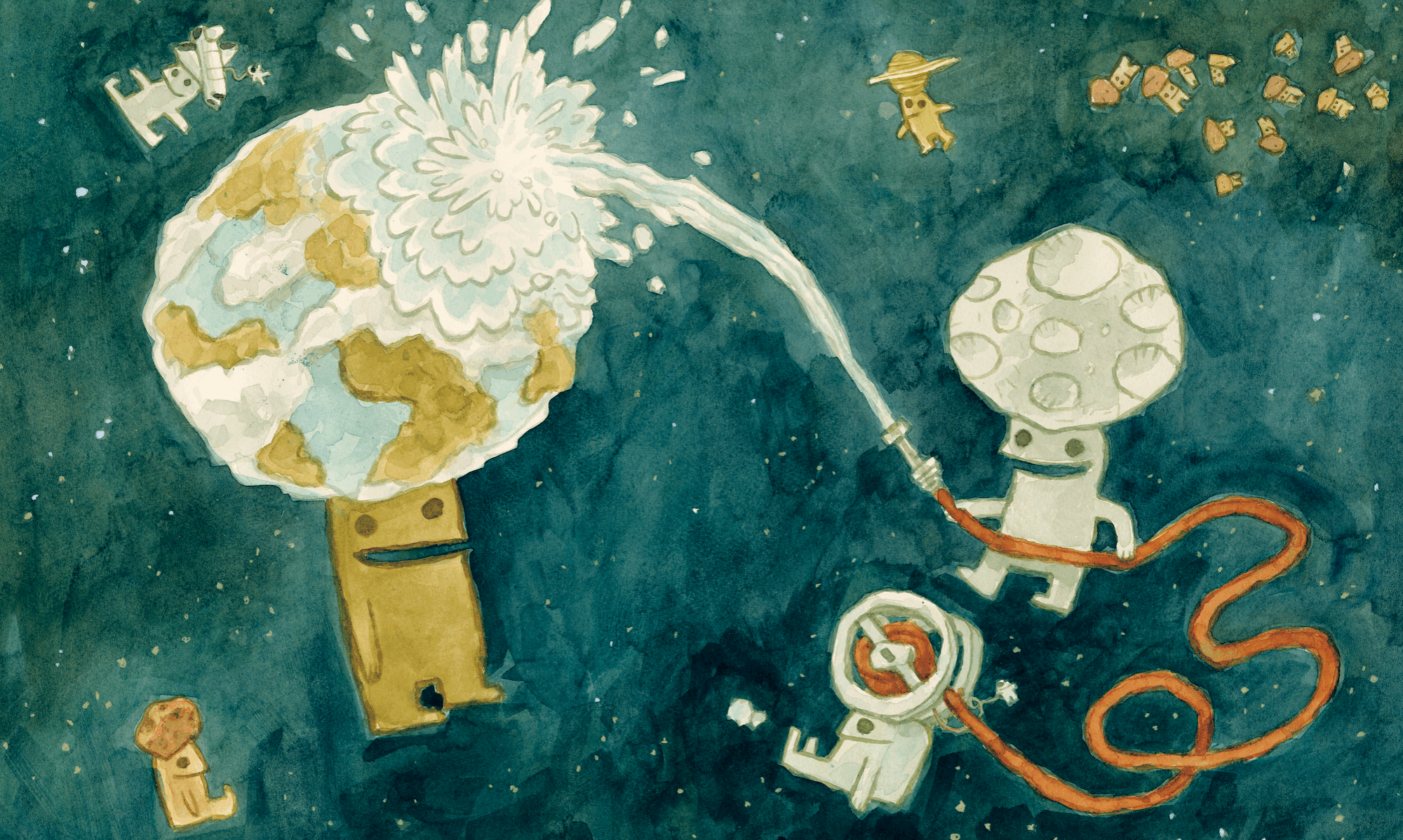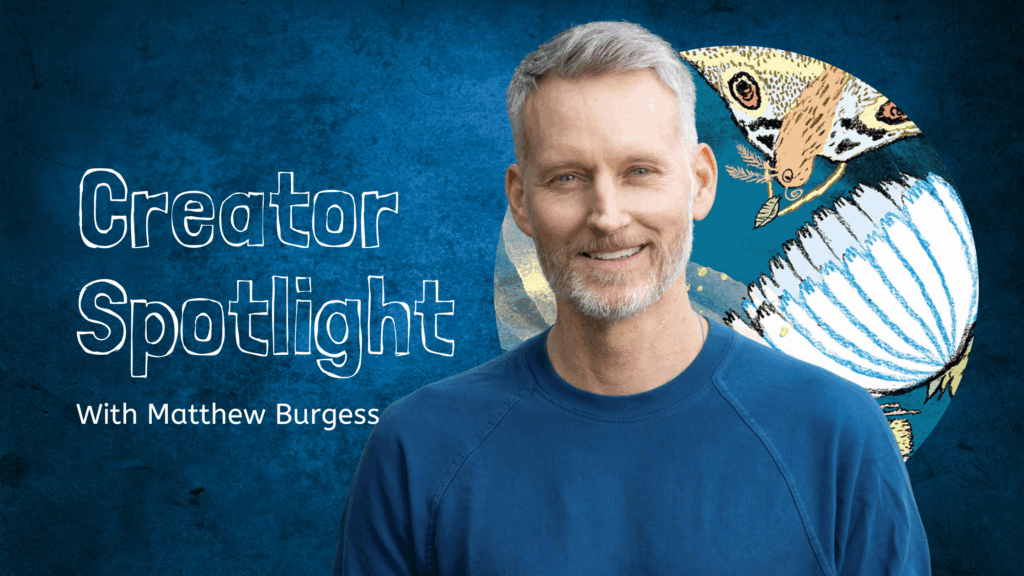
At Tundra Books, we want you to get to know and love our creators as much as you know and love their books. Our creator spotlight series will introduce you to the people behind some of your favorite titles . . . this week, say hello to Matthew Burgess!
About the Author:
MATTHEW BURGESS is a poet, educator, and the author of many picture books including Words with Wings and Magic Things, As Edward Imagined: A Story of Edward Gorey in Three Acts, Bird Boy, and The Bear and The Moon. His books have garnered starred reviews, a Eureka! Gold Award for Excellence in Nonfiction and spots on best-of lists from the New York Public Library, Chicago Public Library, Boston Globe, Washington Post, Kirkus Reviews, Booklist and Amazon. A associate professor of literature and creative writing at Brooklyn College, Matthew has been a poet-in-residence in New York City public schools and currently serves as senior editor of Teachers & Writers Magazine.
Q&A with Matthew Burgess:
Your books have captivated both young readers and critics alike. Can you share what inspired you to start writing poetry for children . . .
For many years, I taught poetry in New York City public schools for Teachers & Writers Collaborative. In these early elementary classrooms, I discovered that most children enjoy reading and writing poems. They haven’t yet been taught that poetry is “difficult” or hard to understand, and they experience the play of language in an immediate and visceral way. Poetry is fun, freeing – a kind of magic carpet ride. I’d read Shel Silverstein or Langston Hughes or Pablo Neruda aloud to these students and whoosh, they were off. In many ways, kids are among the most inquisitive and observant readers out there, and this realization sparked a desire to write children’s books.
. . . and what your creative process looks like when crafting a new poem or story?
When teaching the writing of poetry to kids or grown-ups, I often say to my students: play on the page and see what happens. This reflects my own process. I often write in the mornings, by hand, in a notebook – similar to the way an artist might sketch. If I hear a phrase or catch a rhythm, I noodle my way in and follow it. Sometimes it remains a sketch, but on a good day, it flowers into something more promising – a draft. Then I rewrite it on a fresh page or type it into the computer, extending or cutting, and exploring what form or shape it wants to take. This part of the process involves tinkering, experimenting, and above all, listening.
Words with Wings and Magic Things explores a wide range of everyday moments and experiences, transforming them into something magical. Can you share some of the inspirations behind the themes and specific poems in this book? Do you have a favorite poem or spread?
From the beginning, I wanted the collection to be wild and various. I wanted it to demonstrate to young readers that poetry could be all of these things: profound, soulful, silly, absurd, mystical, strange, beautiful. I wanted the poems to be formal and informal, rhyming and free verse, elegant and madcap. One way to read the seven sections, or what Doug and I refer to as “portals,” is through this lens. For instance, “Whoops and Wallops” contains poems that are more humorous – a bunch of goofballs – whereas the poems in “Whispers and Well Wishes” are more lyrical and sincere. At the same time, there are themes that run through all of the sections, and nothing is confined to a tidy container.
Your new book Words with Wings and Magic Things features illustrations by Caldecott medalist Doug Salati. How did this collaboration come about, and what was the creative process like working together to bring these poems to life?
Doug and I met for the first time in February 2020. Over coffee, I asked him what he wanted to work on next, and I remember him saying, “I want to illustrate poems.” I set to work immediately, gathering poems that I had already written and writing more. The promise of a collaboration with Doug opened a channel, and out flowed new work. Then, one month later, Covid struck and we were both in lockdown in our respective Brooklyn apartments. With a sudden abundance of solitude and time, I wrote and wrote. I would send Doug poems by email, text, even audio message, and in response, I began to receive these brilliant pencil sketches. We created the book together in this way, volleying poems and pictures back and forth. It was playful from the beginning, both a game and a conversation.
Your poems celebrate the power of words to awaken the imagination and transform the ordinary into the extraordinary. What message do you hope young readers take away from Words with Wings and Magic Things?
For me, writing a poem usually feels more like listening than speaking, more like receiving messages and passing them along. One poem, titled “Voice,” hints at this: “Imagine you’ve become an ear / whose gift it is to listen– / Many trample the morning grass, / but few will see it glisten.”
There are various winks and messages layered throughout the poems in this book, and I hesitate to list them or name them. They are in there, glistening, for those who look. But when it comes to a larger message or take-away, I believe that poetry, like art, possesses a liberating power. It can teach you to be more alive to the strangeness and beauty of life, and to be more free. If young readers connect with this, on any level, through the poems and through Doug’s pictures – that is the dream.
What advice would you give to parents and educators looking to introduce poetry to children?
I’m a huge Peanuts fan, and I often think of this comic by Charles “Sparky” Schultz. Sitting at their school desks, Schroeder, holding a book, complains to Lucy: “Studying poetry spoils the poems. Why do we have to explain a poem? That’s like trying to explain a summer sky, or a winter moon… ” This isn’t entirely true – close reading poems can be a great pleasure – but we all know what Sparky (via Schroeder) is getting at.
My advice to parents and educators looking to introduce poetry to children would be to focus on experiencing a poem, first and foremost, by reading it aloud together, and simply allowing it to play upon your mind, your imagination, and your senses. Delight in it. Don’t think you have to solve some riddle or understand what it is saying on some “deeper level.” Sometimes a poem will provoke you to read it a second or even a third time, or it might flip a switch or turn a dial inside of you, making you feel a certain way: bouncy, or stirred up, or perplexed, or emotional, or amazed. Poems also have a way of provoking beautiful questions. When reading poems with kids, I like to raise questions and see what questions are coming up for them, with no pressure whatsoever to provide or arrive at concrete answers.
Books by Matthew Burgess:
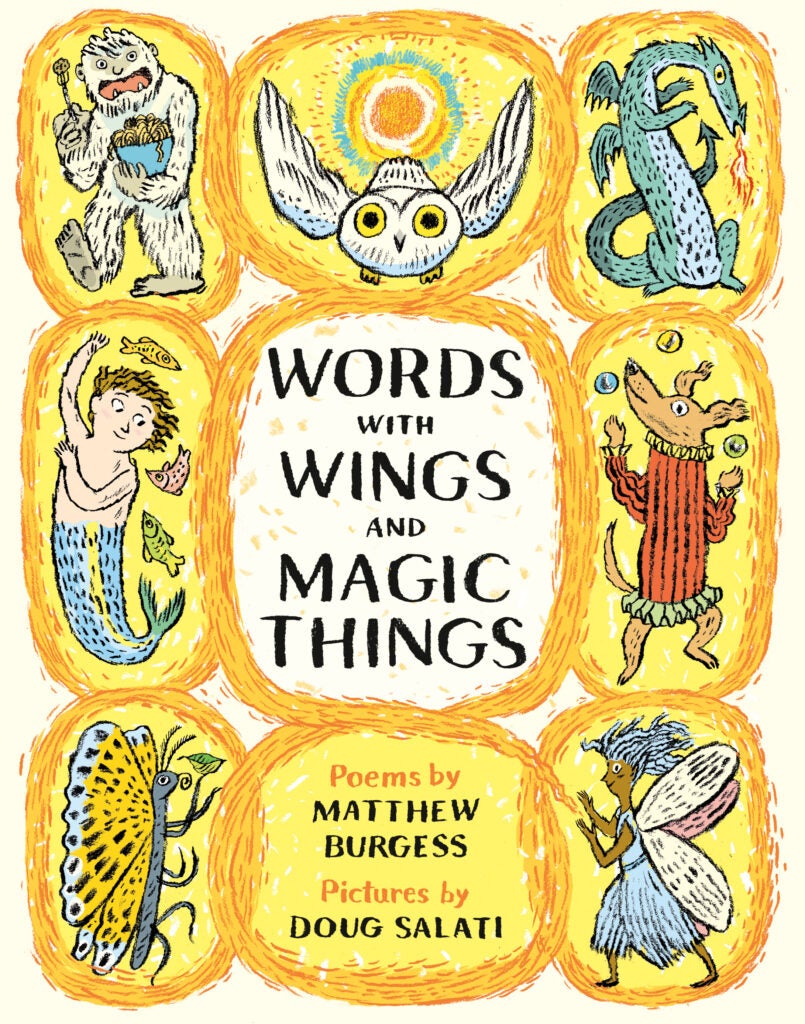
Words with Wings and Magic Things
Written by Matthew Burgess
Illustrated by Doug Salati
128 Pages | Ages 5-9 | Hardcover
ISBN 9781774880289 | Tundra Books
Beyond the doorway of the first page of this collection awaits a dragon piñata, an alligator on the A train, a hungry yeti, an ice cream dream, jetpack sneakers, midnight firelight, a gray day, a plump tomato, a serious question and so much more. Whether you’re feeling blue, lemon yellow or Day-Glo green, this inviting and magical book of poems takes young readers on an uplifting journey through everyday moments, moods and experiences, transforming the ordinary into the extraordinary. With enchanting illustrations throughout and seven die-cut portals that open into the realms of Welcome, Wonder, Wild, Weee!, Whoops & Wallops, Windows and Whispers & Well Wishes, Words With Wings and Magic Things explores how words can awaken us to a world of wonder and possibility. Step inside . . . and take flight!
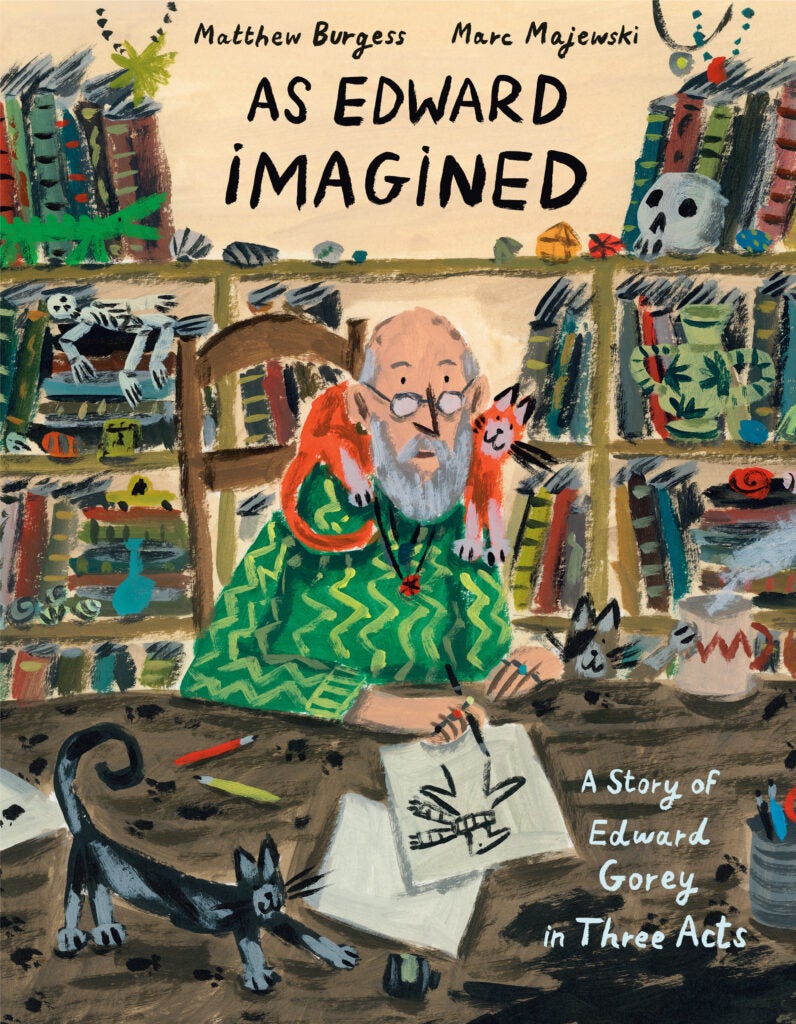
As Edward Imagined
Written by Matthew Burgess
Illustrated by Marc Majewski
48 Pages | Ages 4-8 | Hardcover
ISBN 9781984893802 | Knopf BFYR
Discover the unique childhood and life of the enigmatic and eccentric Edward Gorey whose artwork and books had a profound impact on creators such as Neil Gaiman, Lemony Snicket, and Tim Burton. Even as a young boy, readers learn that Edward constantly forged his own path, passions, and pursuits never forsaking his individuality for fame.This brilliant picture book biography is paired with a whimsical art style that captures the unrelenting creativity Edward brought to his playfully macabre creations.
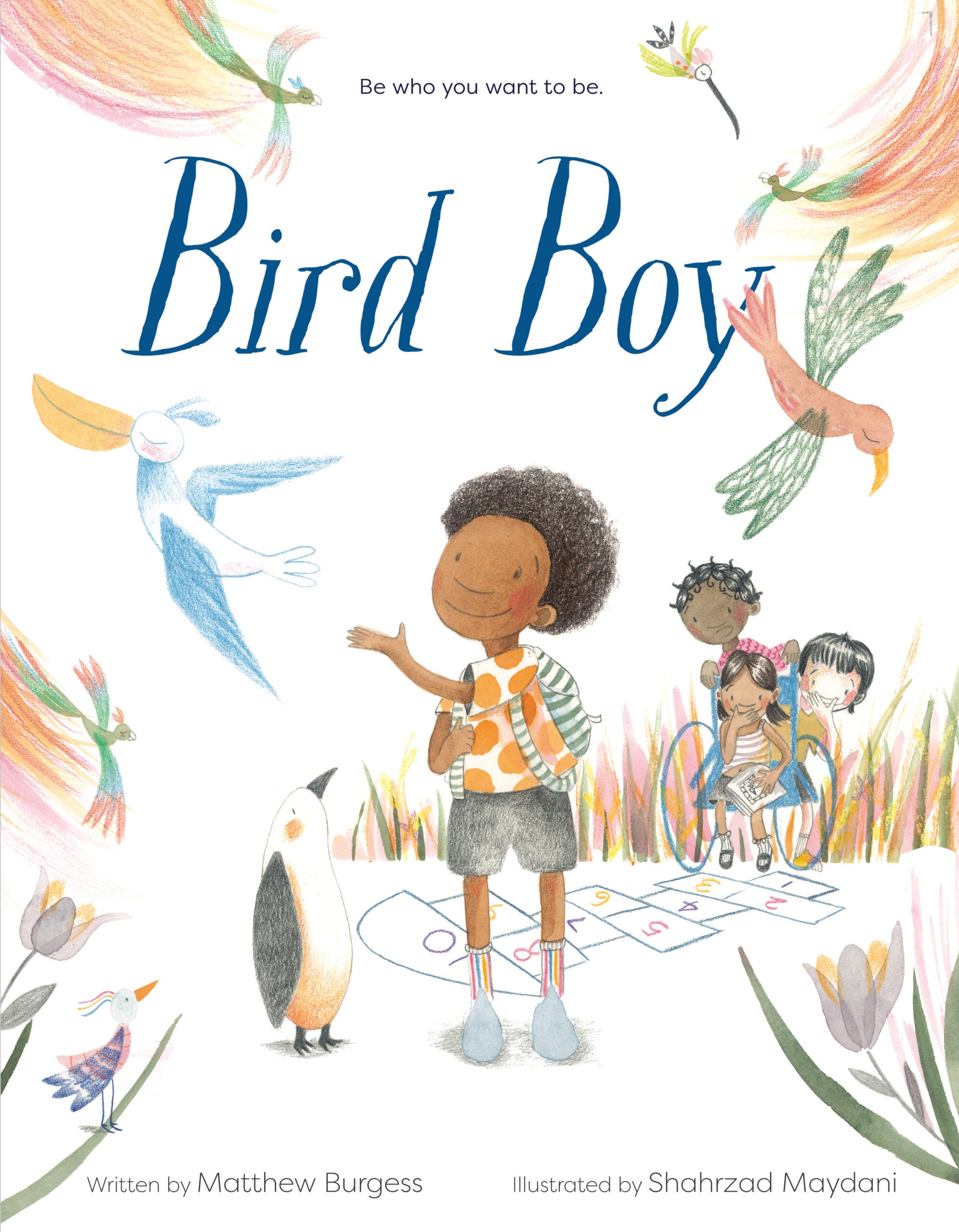
Bird Boy
Written by Matthew Burgess
Illustrated by Shahrzad Maydani
32 Pages | Ages 4-8 | Hardcover
ISBN 9781984893772 | Knopf BFYR
Nico was new, and nervous about going to school. Everyone knew what to do and where to go, but Nico felt a little lost.
So, he did what he loved to do:
Watched the insects
Sat in the grass
And most importantly… befriended the birds.
Before he knew it, Nico was known as BIRD BOY. But Nico didn’t mind. Soon, he made one friend, then two, as the other kids learned to appreciate Nico for who he was. Before long, Nico learned he could be completely, delighfully, himself. This dreamy story will encourage all readers to express who they are unapologetically.
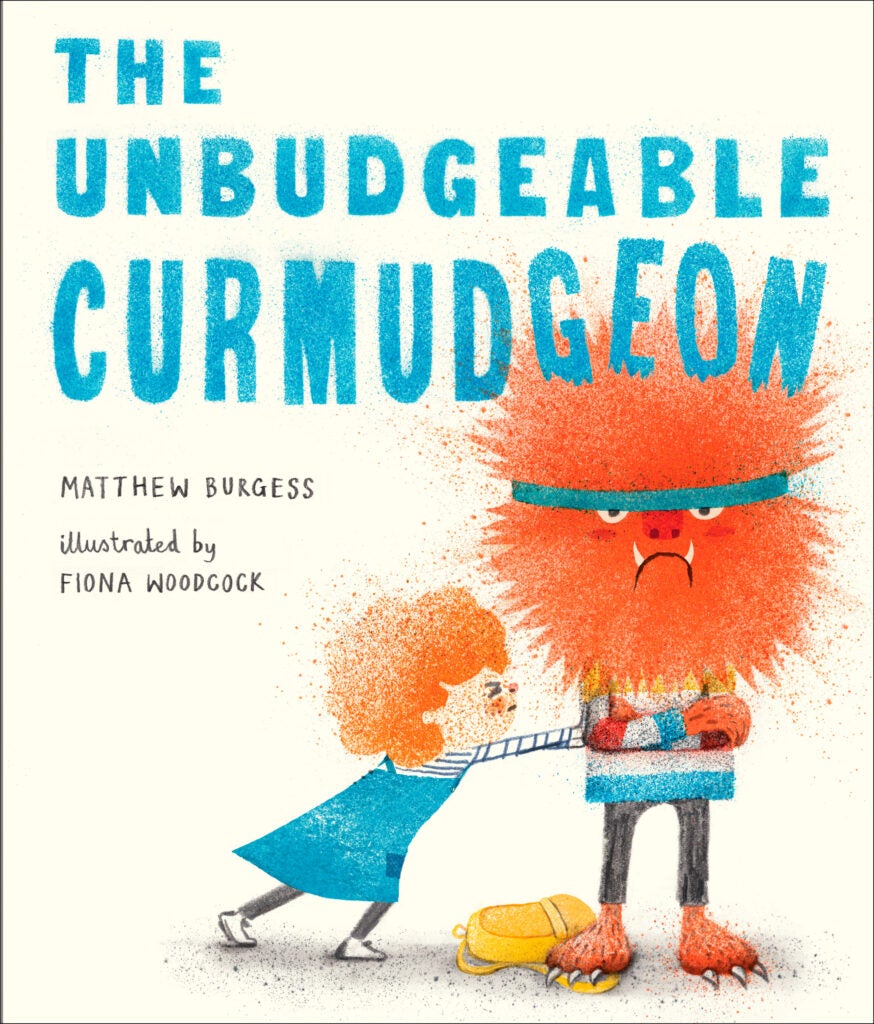
The Unbudgeable Curmudgeon
Written by Matthew Burgess
Illustrated by Fiona Woodcock
32 Pages | Ages 4-8 | Hardcover
ISBN 9780399556623 | Knopf BFYR
Have you ever seen a curmudgeon that looks like your brother, but is in such a bad mood you hardly recognize him? You can try all the peanut butter sandwiches and brownies you have, but he is not moving. Nothing works, especially nudging, and he just makes you so grumpy that eventually you have no choice but to fight back – and then . . . Have you ever become a curmudgeon that just won’t budge? Matthew Burgess’s playful depiction of bad moods and sibling rivalry is matched perfectly by Fiona Woodcock’s unique childlike art style.
